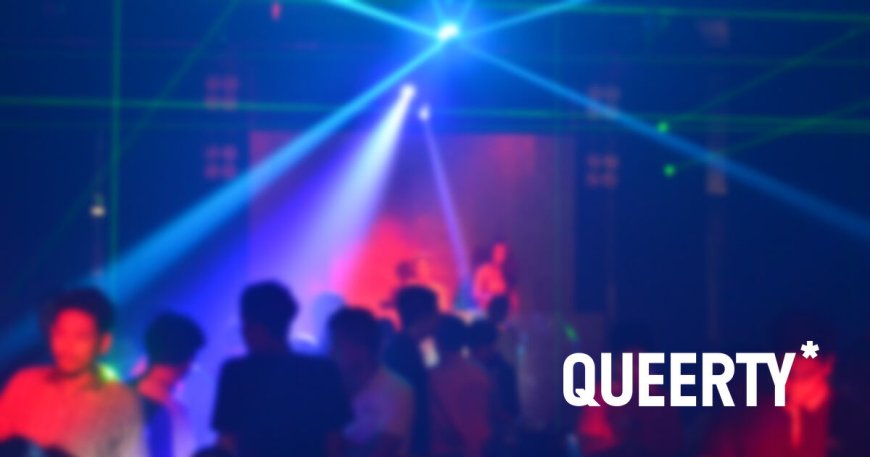A new enemy has been infiltrating gay clubs & killing the vibe. What does it mean for Labor Day parties?
Ketamine may be single-handedly destroying the vibe on dance floors, as the detached and dissociative effects contradict what DJs around the world are cooking up.


As the dance track goes, “It’s a murder on the dance floor… you’d better not kill the groove.” Sadly, these words ring true now more than ever, as a new enemy may be upon us.
If you’ve partied at a circuit event recently, danced till dawn to your favorite E.D.M. DJ, or hit up the after-hours at Pride this summer, you may have noticed something a little, well, strange.
Usually, when the beat drops, the dance floor erupts in an electrifying boom of synchronized jumps, arm-raising cheers, and big smiles. But lately, a lot of club-goers say it’s been quite the opposite.
The alleged culprit? Ketamine. Or more specifically, it’s over-use.
Recently, a DJ in the U.K. tweeted out his observation that the energy in the club has been completely muddled by the over-use of the club drug, which medical practitioners and veterinarians use as an anesthetic.
Many know it as a “horse tranquilizer”, and while it’s been on the rise lately as a possible treatment for many mental health disorders like depression, using it recreationally in the club may be completely killing the vibe.
there is far too much ket on dancefloors in the uk imo. everyone should have fun but it sucks seeing people kind of just standing around like zombies and not dancing. i have so much more fun dancing in a club when the people around me are more engaged— salute (@saluteAUT) May 28, 2023
The tweet, which has over 381.7K views, gives voice to what feels like a dance-floor-destroying epidemic, describing people in the venue “standing around like zombies and not dancing.” Gee, just what we want to happen when the DJ drop’s Kylie’s new song “Tension.” (Which we’re currently obsessed with BTW.)
It doesn’t seem like this DJ is alone in his opinion, either. The tweet drew overwhelming support from other DJ’s and club-goers around the world, with one Polish DJ and producer VTSS writing, “I’ve actually started asking promoters in cities around the world what’s the predominant substance that’s consumed around there to adjust my vibe expectations.”
I’ve actually started asking promoters in cities around the world what’s the predominant substance that’s consumed around there to adjust my vibe expectations lol https://t.co/hIOsYpUfpx— VTSS (@vtss_pl) May 28, 2023
If you think about it, it makes sense, since ketamine kind of puts you in your own little spaced-out world, rather than connecting you with the energy of those around you.
According to the Drug Enforcement Administration, the drug “distorts the perception of sight and sound and makes the user feel disconnected and not in control. It is referred to as a “dissociative anesthetic hallucinogen” because it makes patients feel detached from their pain and environment.”
Dissociation – one of the most well-known side effects of the drug – refers to a temporary mental state in which a person detaches from their surroundings. “Detached ” and “dissociated” are probably not the vibes you want when spending big bucks on those Labor Day event tickets.
A DJ named Josh Haygarth, who goes by Next Generation Noise, seems to agree.
“[Ketamine] is drastically slowing the pace,” he says. “When you’ve got music that is geared around being high energy, and you’ve got a dance floor that looks like they’re doing the mannequin challenge, it’s hard to really get that energy up.” Yikes!
In lower doses, people have reported that “K” can have slightly energizing effects, and even enhance the music. The problem is that club-goers are taking too much of it, which is easy to do, especially when the drug is mixed with alcohol, which only increases it’s dissociative effects.
Of course, ketamine is not new on the scene.
An owner of a major London club, Mark, says even before the 2000s, the prevalence of ketamine was impacting the atmosphere at parties. He remembers ket first appearing on the dance floor in the late ’90s.
“It flooded in, and everyone was giving it a go… and it felt like, almost overnight, for me, [ketamine] completely killed the scene,” he says. “The collective experience, the united ‘oneness’, kind of dissipated and dissolved into thousands of people having relatively introverted, introspective experiences.”
Sadly, the trend appears to be on an uptick again. Some DJs are saying the way to combat it is to simply focus on the people who are bringing the enthusiasm. “I’m focusing on the people who came to rave – the people who are there for the energy,” one says.
So this Labor Day, if you’re not hiding from the police drones in NYC that are now legally allowed to spy on the fun, you may have to watch out for yet another party-killer. If you can, try to encourage those around you to go easy on the “kitty”.
The future of the dance floor may depend on it.

 Mark
Mark 





